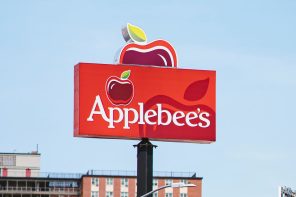In 1982, Coca-Cola changed the game. The launch of Diet Coke, a new formulation sweetened with aspartame and Ace-K, was the beginning of a push by Coca-Cola to reduce the sugar content of its products. Today, the Coca-Cola portfolio consists of more than 120 products under 21 brands. The top selling products all have a no-sugar alternative, the sales of which account for a third of all products sold.
As Coca-Cola South Pacific’s Scientific and Regulatory Affairs Manager, Coral Colyer has been heavily involved in the move to reduce sugar across the entire Coca-Cola portfolio, and particularly in the development of Coca-Cola Stevia No Sugar, which launched in New Zealand on May 7. Coca-Cola Stevia No Sugar is the natural progression of Coke Life, which first hit New Zealand shores in 2015, using a blend of sugar and stevia. “We were looking to get a balance of the two and bring the overall level of sugar down by 35 percent,” Colyer said. “What we heard from consumers was that they wanted clarity and didn’t want any trade-offs.”
Coca-Cola Stevia No Sugar is, as the name suggests, sweetened entirely with stevia, the plant-based sugar alternative which contains no energy and no kilojoules. There are over fifty different kinds of stevia, and it’s how they are blended that is the key to the success of Coca-Cola Stevia No Sugar.
“What we know is that some people are a bit more sensitive to the stevia aftertaste,” she explained. “We are using a very specific part of the stevia leaf as a sweetener that tastes delicious and has a clean aftertaste. We’re giving consumers the chance to decide for themselves within our range. It takes an awful lot of work, and far more PhD’s than I would ever dream of! But all this work has been going on for years.”
The process of extracting stevia is deceptively simple. The stevia leaves are steeped, like a cup of tea, and the solution is dried out. The resulting powder is then ready for use. The problem is, sugar does so many other things in food.
“Yes, it provides sweetness, but it also provides texture, mouthfeel and structure,” she said. “It also plays a role in preservation, so it has an impact on shelf-life, which may not be good for the trade. The R&D folk have a lot of other things that they need to consider other than sweetness. For me, that’s the art and science of R&D.”
While research continues around the world into the possibility of synthesising natural sweetening compounds, the one used in Coca-Cola Stevia No Sugar is derived directly from plants – something which Colyer said is important to consumers.
“It’s all about choice. Coca-Cola has been around for 130-odd years, and we’re better known for our sparkling beverages, but we have a wide range of non-sparkling drinks in which we’ve already lowered the sugar content, so it was about making these changes across the board and letting consumers choose what they like and what is best for them.”
It’s the balance between good health and good taste which Colyer enjoys most about her role. Throughout her career she has worked both in the food industry and with the food industry, developing low-salt bread alternatives with manufacturers as well as working with the Heart Foundation. It’s the understanding of both public health and the commercial aspects of manufacturing which has given her unique insights. Without a good-tasting product, any potential public health impact will be lost.
“There’s no point in making a product that is good for people if no one likes the taste,” she explained. “People will buy it once, perhaps out of curiosity, then never buy it again. We need to balance the health benefits with how people are going to enjoy it. We’ve put a lot of work into making sure that Coke Stevia No Sugar tastes just as good as the other Coke products on the market.”
New Zealand consumers will be the first to try Coca-Cola Stevia No Sugar. When the idea was first suggested by Coca-Cola global, it was New Zealand who rushed to be top of the queue. It’s not uncommon for New Zealand to be at the front of such releases – the country was the third, after Japan and Mexico, to receive Coke No Sugar last year – and Coca-Cola New Zealand has made a commitment that any new Coca-Cola innovations are to have a reduced sugar content, or simply have no sugar at all. Coca-Cola Stevia No Sugar fitted well with this aim.
“We’ve made changes in the last few years with reformulation as well as pack sizes, so it’s really exciting to be offering something brand new,” she said. “The pack size is in partnership with what’s inside the bottle.”






